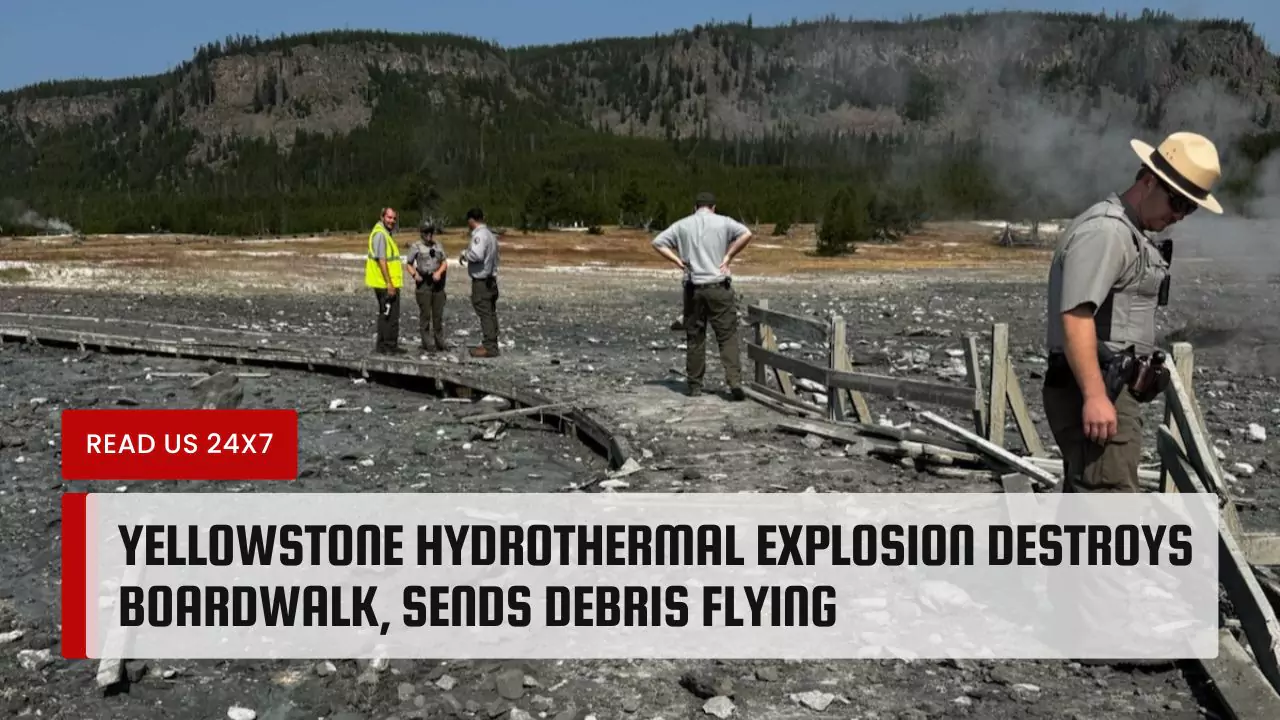On July 23, 2024, a hydrothermal explosion at Biscuit Basin in Yellowstone National Park destroyed parts of the boardwalk and sent debris into the air. This incident startled onlookers but thankfully resulted in no injuries.
The Hydrothermal Explosion Incident at Biscuit Basin
The explosion occurred around 10:00 AM MST. Visitors captured videos of the massive plume created by the eruption. The event was powerful enough to cause damage to the nearby boardwalk. Officials later determined that the explosion originated near Black Diamond Pool, a well-known hydrothermal feature.
Park officials acted quickly to ensure visitor safety. They closed the Biscuit Basin area, which includes the boardwalks and parking lot. The Grand Loop road remained open, allowing access to other parts of the park.
Effects on Yellowstone National Park and Visitor Experiences
Temporary Closure of Biscuit Basin Facilities
Following the explosion, the Biscuit Basin area had to be temporarily closed to protect visitors from potential hazards. This decision aimed to prevent anyone from getting too close to areas that might still be unstable or unsafe. The closure included all facilities in Biscuit Basin, such as the boardwalks and parking areas.
Structural Impact to Boardwalks and Parking Areas
The boardwalk sustained significant damage due to the explosion. Large pieces of the structure needed repairs. Park officials assessed the damage to ensure visitor safety before reopening the area. The parking lot also experienced some destruction, which added to the urgency of the closure.
Safety Measures: No Injuries Reported
Despite the chaotic nature of the event, park officials quickly confirmed that no injuries occurred. Visitors were able to flee the area before anyone got hurt. This outcome reflects the effectiveness of park safety protocols. Immediate communication and quick actions by both visitors and park staff minimized the risk to anyone present during the event.
Understanding Hydrothermal Explosions and Their Risks
What Causes Hydrothermal Explosions?
Hydrothermal explosions happen when underground water, heated by geothermal activity, rapidly turns to steam. This pressure buildup can cause a sudden release of steam and gas, resulting in an explosion. These events are usually localized and occur in geothermal areas where the geological conditions are right.
Hydrothermal explosions are a natural occurrence in places like Yellowstone. They do not indicate increased volcanic activity. The U.S. Geological Survey (USGS) explained that today’s explosion does not mean a volcanic eruption is coming. Regular monitoring helps maintain public safety around hydrothermal features.
Historical Data on Frequency and Safety Precautions
Hydrothermal explosions are more frequent than many people realize. Historical records from Yellowstone show that such events have occurred several times throughout the years. One notable incident happened in May 2009 in the same Biscuit Basin area.
The USGS continues to monitor Yellowstone closely. Scientists track temperature changes, water levels, and seismic activity. This information allows them to predict possible hydrothermal events. Additionally, park management works to educate visitors on safety around geothermal areas.
By maintaining alertness and implementing safety measures, Yellowstone Park plays its part in ensuring visitor safety. Signs and park rangers provide guidance on safe viewing areas. Awareness of hydrothermal features enhances visitor experiences while keeping them safe.



